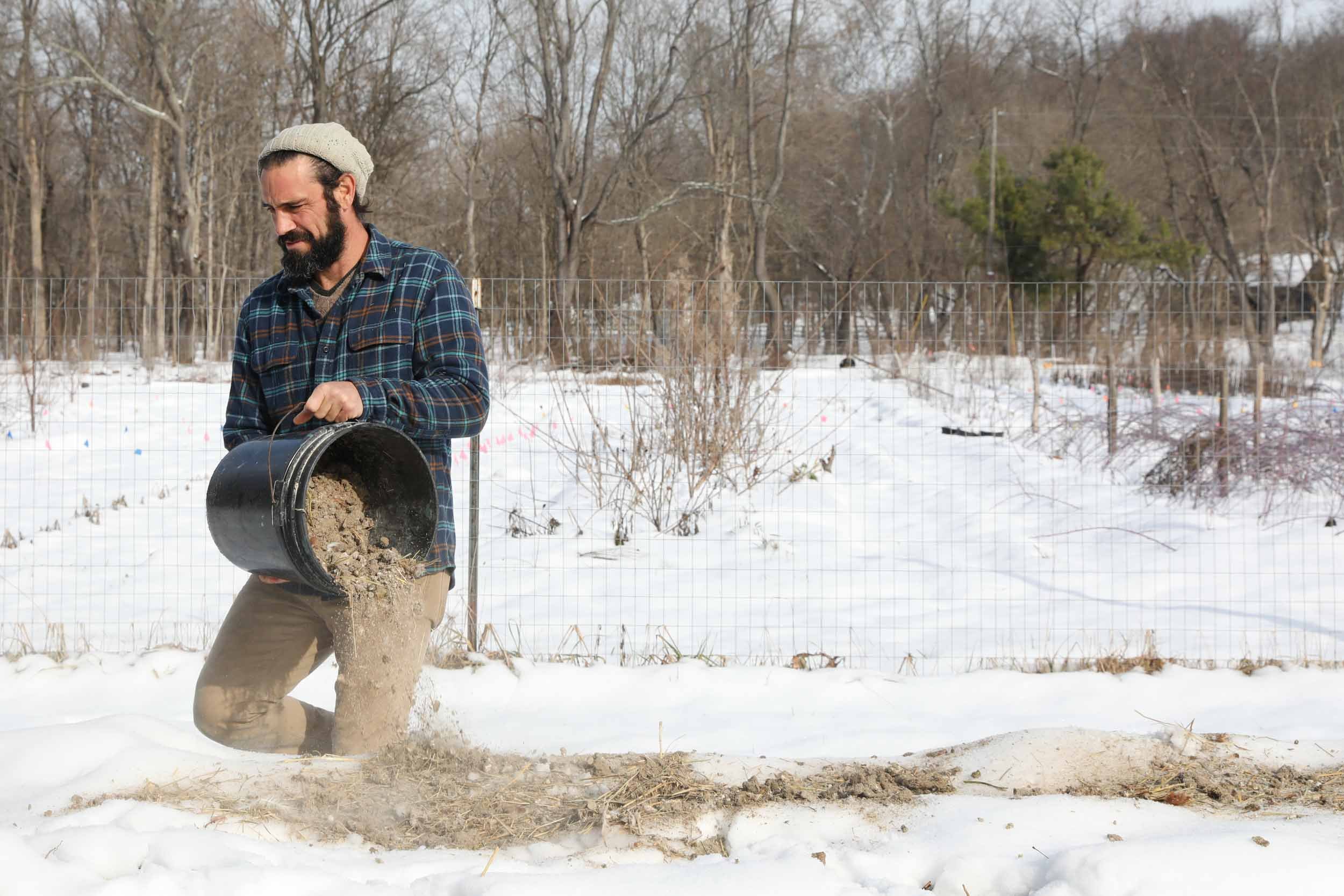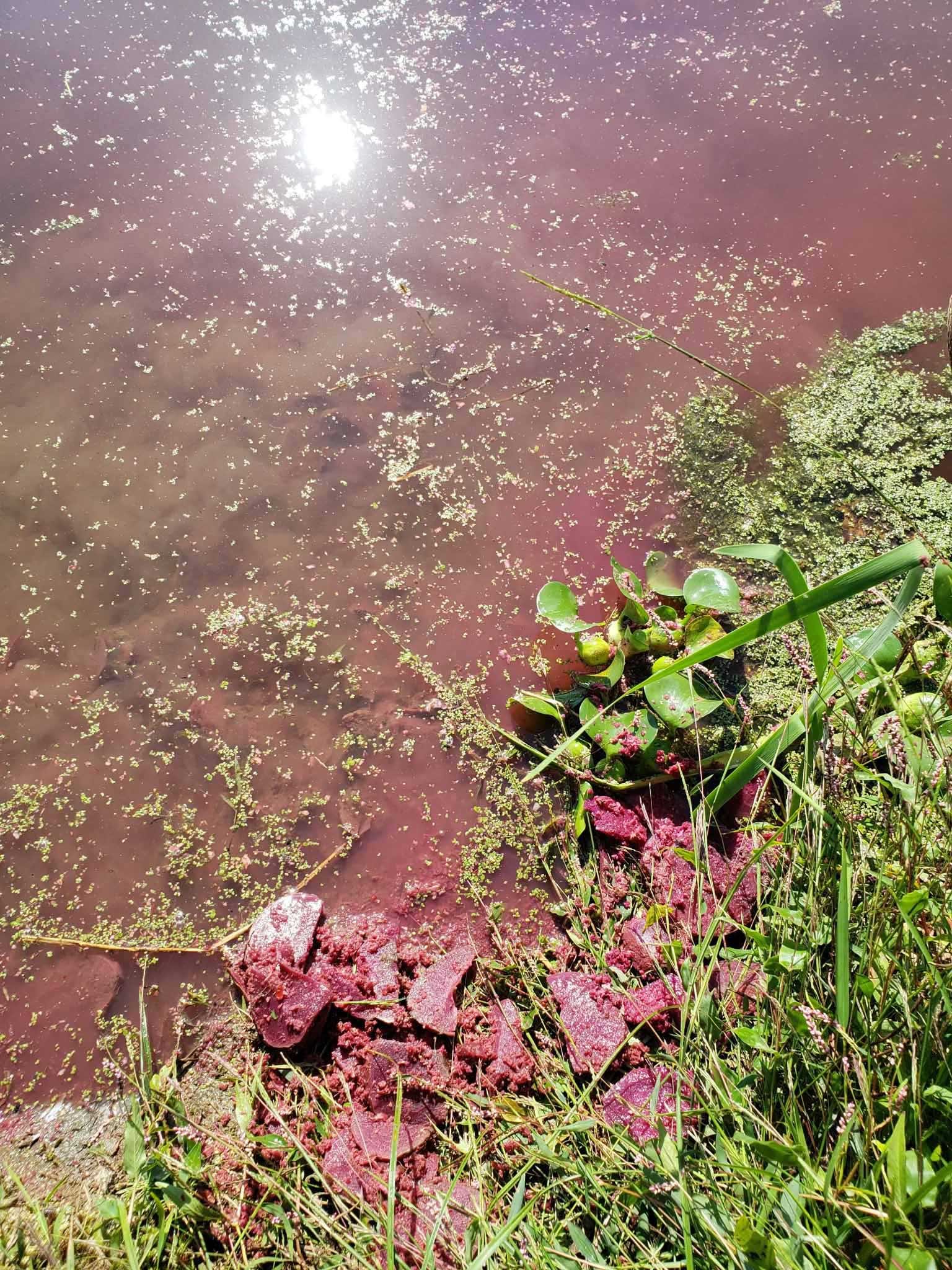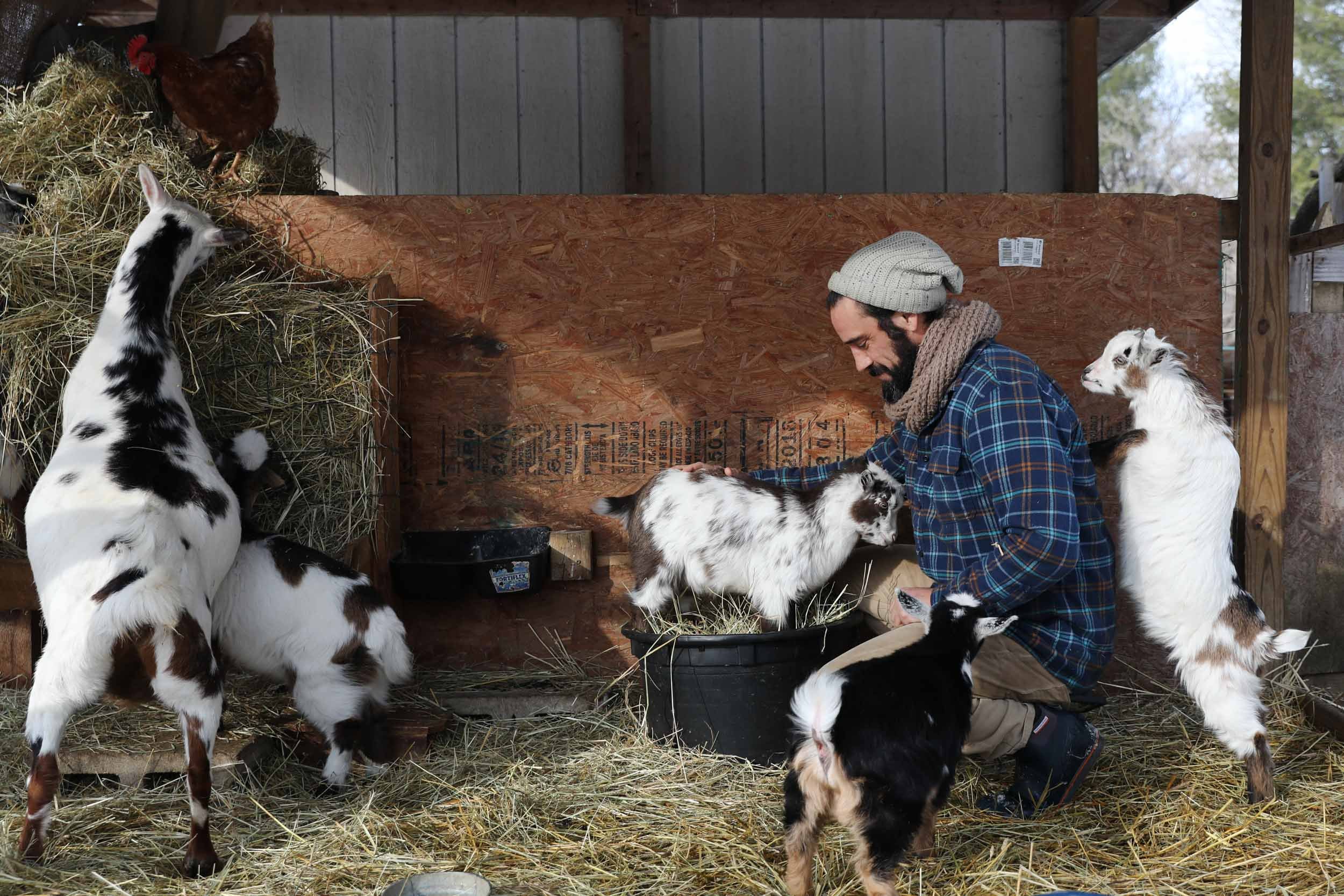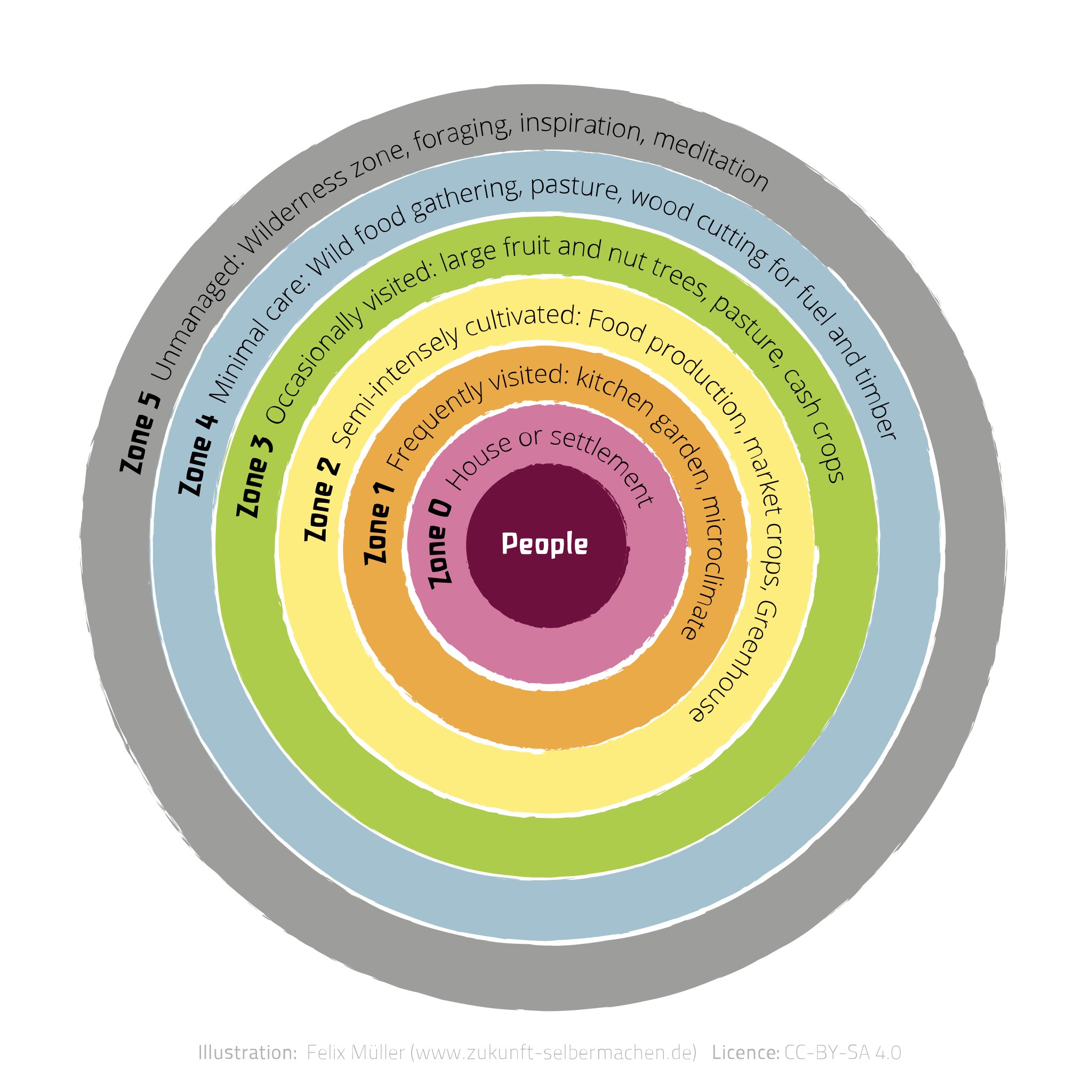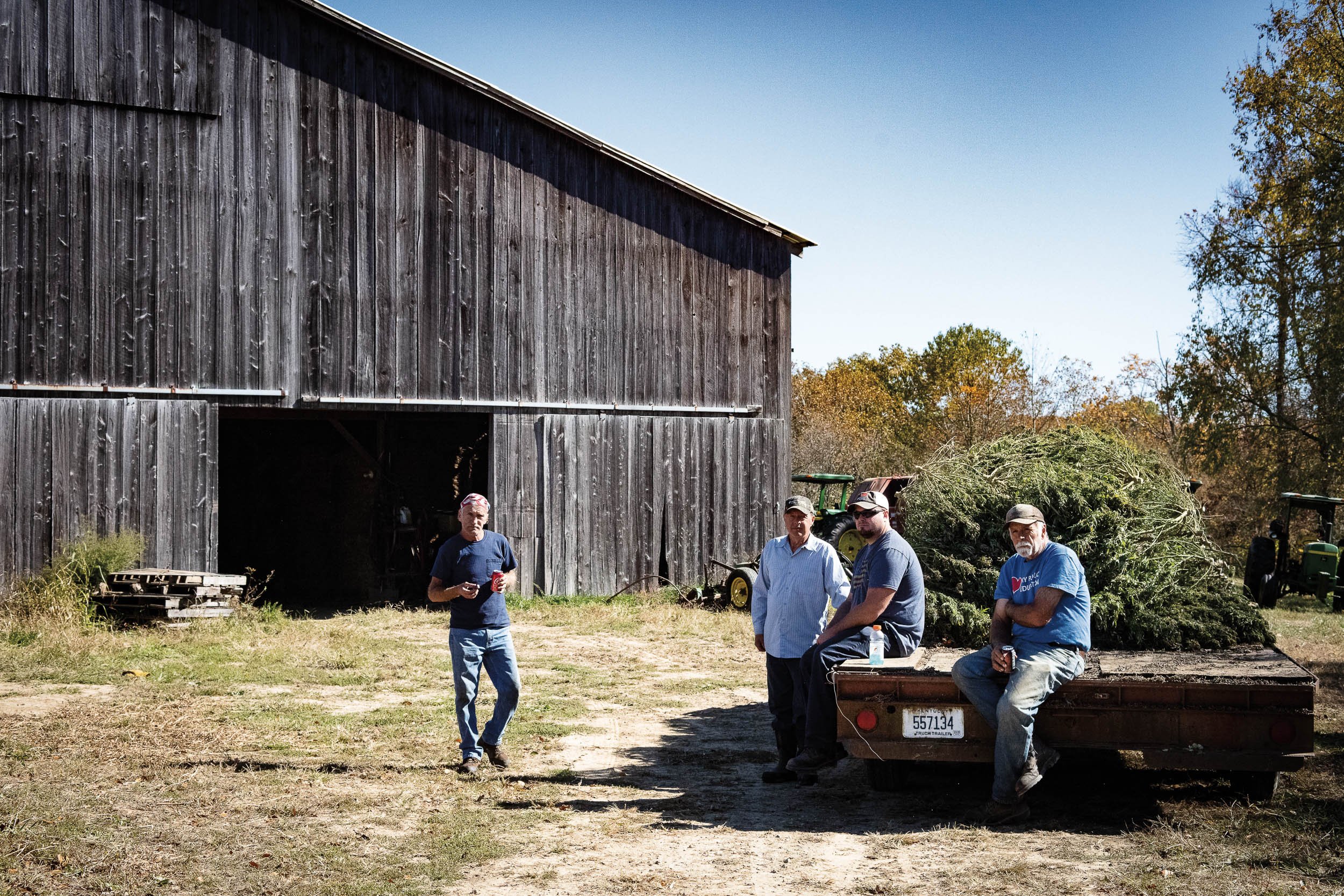Permaculture Evangelist
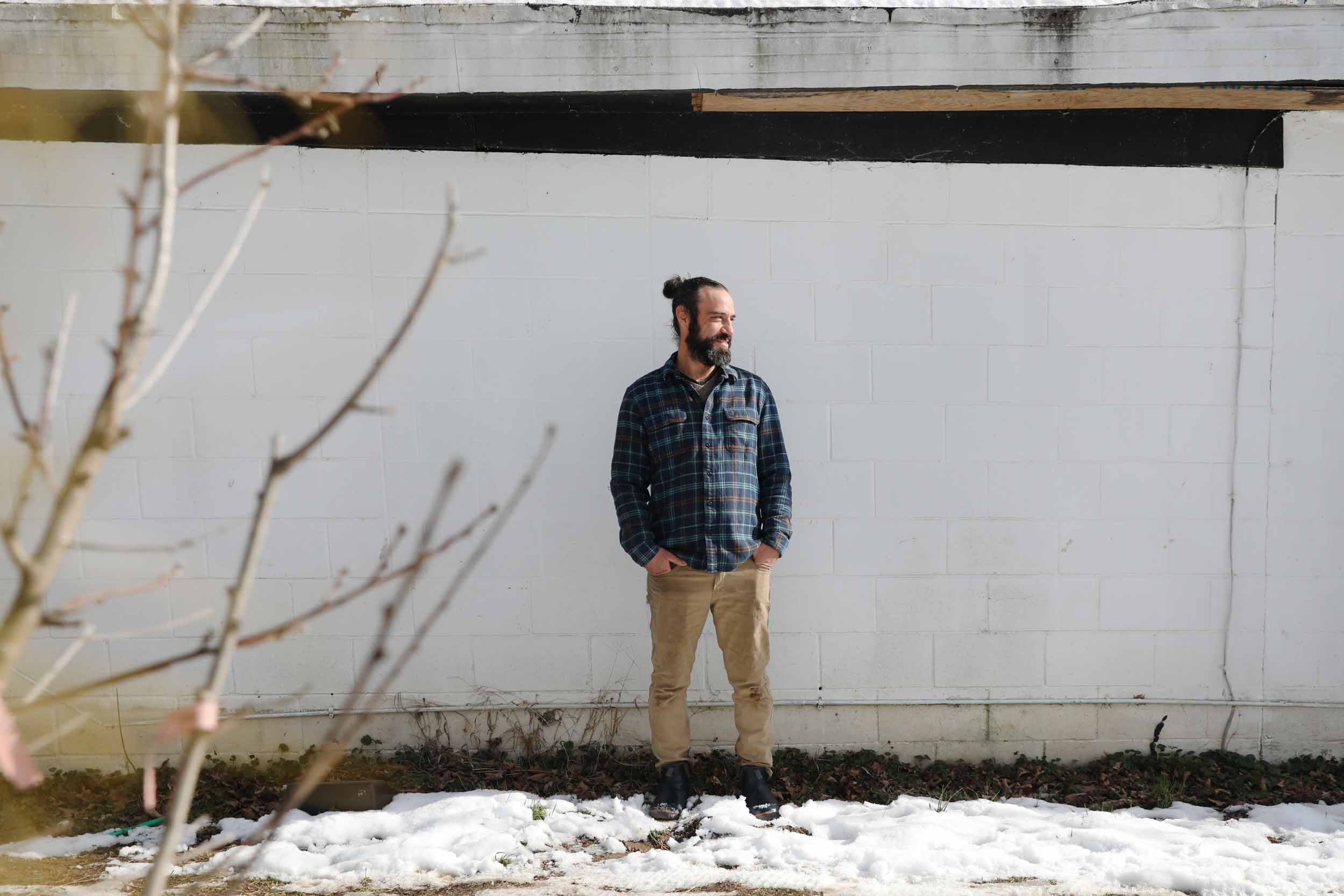
Northern Kentucky farmer and educator Doug Crouch brings the global permaculture movement to Ohio Valley yards, farms, and gardens.
by Hannah Purnell
portraits Madeleine Hordinski
As an Edible Ohio Valley reader, you likely move in circles where sustainable food is frequently on the table — both to eat and to discuss. It’s also likely you’ve heard the term “permaculture” bandied about in recent years. But if you’re still not sure what it means, you’re not alone.
Examples of permaculture date back centuries, of course, but in 1976 it was Australian ecologist Bill Mollison who first coined the portmanteau. Like the organic food movement that started around the same time, permaculture as a concept and approach to sustainable living is now moving out of the fringes and into our collective consciousness.
Here in the Ohio Valley, the Cincinnati Permaculture Institute (CPI) is the primary authority on the subject, which their website defines thusly:
Permaculture systems are designed to create an abundance of resources in sustainable and regenerative ways to fulfill humanity’s needs. By making small adjustments and planning functional interconnections between the different aspects of a yard, farm, home, or community, dramatic regeneration and restoration can take place without the use of energy intensive industrial solutions.
Permaculture expert and CPI instructor Doug Crouch puts it another way: “That’s really just a fancy way to say, ‘Permaculture is making your own stuff.’” And although it’s most commonly discussed as an alternative to modern agricultural processes, Crouch says permaculture’s three pillar philosophies can be applied to any human context or discipline:
Earth Care
Being good stewards of water, soil, trees, and other natural resources.People Care
Responding to the needs of ourselves and others.Fair Share
Returning any surplus back to the first two pillars.
These three values combine to create a persistent, self-reporting system. That is to say, permaculturalists believe every environmental problem can be traced back to a lack of attention to one or more pillars. Its advocates also believe permaculture starts at home, spreading like regenerative fire through local communities and beyond.
Bringing Global Permaculture Home
Crouch first got into permaculture as a student in 2005. After earning a degree in fish and wildlife management from Hocking College near Athens, OH, he traveled the world, taking farm and fishery jobs while learning and teaching permaculture across the U.S., Latin America, Europe, Asia, and New Zealand.
“I had a pretty charmed life as a whiteish man with a U.S. passport,” says Crouch. “I took advantage of it, and I worked hard to learn and build my brand as an educator. Most of what I was growing at one point in my life were students.”
One of the places Crouch worked was Andalucía in southern Spain, where humidity levels and limestone-based clay soils are similar to those in the Ohio Valley. In the region’s massive wheat and oil sunflower fields, he witnessed widespread desertification from overtilling and pesticide use. When he returned home, he found more of the same.
Permaculture is a circular system designed to minimize waste. Crouch recycles chicken manure as compost for his fields. And raw materials left over from making fermented beet kvass go into Treasure Lake to return nutrients to the water.
“The difference is there it rains five months of the year and here it rains 12, so we’re not seeing the direct impact of that desertification,” he says. “But you drive from here to Indianapolis and you see the wind literally sweeping the soil. You see the giant erosion gullies on land that is practically flat. You see the monocultures, the spray trucks, the effects of overpopulation. It’s everywhere, and it’s all driven by money.”
All over the world, Crouch says, farmers are under intense pressure to produce via mandated agricultural practices that compromise the land many have stewarded for generations. They understand the damage done by pesticides and overharvesting, but if they refuse these practices, they risk losing subsidies that pay for their children’s food, clothing, and education.
Crouch’s experiences abroad sparked a desire that many farmers feel, to provide the education and sustainable options people need to make better choices for sourcing their food. So, with the philosophies of permaculture firmly in mind, he decided to start at home.
Building a Business on Three Pillars
These days, Crouch parlays his global education into something of a sustainable living collective at his family’s 60-acre Treasure Lake in Petersburg, KY. Once a pay-fishing lake and event center, the property now features nature trails, some livestock, and a private nursery.
There’s also a facility where Crouch’s small team recycles local farm waste for compost and produces small-batch maple syrup and other goods in the offseason. They barter much of what they make with other local farmers, in accordance with permaculture’s “fair share” values.
Treasure Lake also serves as headquarters for Crouch’s two main income-generating ventures: TreeYo
Permaculture and Harvest + Habitat, respectively, provide regenerative landscaping consultation and installation services for diverse residential and commercial clients in the Tri-state area and beyond.
The word ‘regenerative’ applies to people and planet at Treasure Lake. Crouch manages livestock in a way that rebuilds soil. And the natural environment provides a respite for visitors who come to the property to learn or simply recharge.
“My family was never into farming or stewarding the land,” Crouch says. “Around 2019, I decided to stop with my global permaculture, and it was good timing because, of course, the whole world shut down in 2020.”
In a weird twist, Covid-19 proved a boon for Crouch’s business. He says that while he’s opposed to companies that market to people’s food insecurities, he’s seen a steady stream of new clients who are interested in permaculture.
“I started doing more edible landscaping installation partly because of that,” says Crouch. “There was already a general trend of people wanting to eat better and be healthier, but suddenly they’re stuck in their houses and starting to look around for ways to make their yard or garden more efficient. Maybe they went to buy something at the grocery store, and it wasn’t there. You put those things together and it makes a niche market for edible landscaping.”
Crouch’s work takes him to homes and businesses of every size and scale, but his approach is the same no matter the project’s acreage or focus. It’s all based on blending the three pillars of permaculture.
“What makes us different from your typical landscape company is that we’re really into this holistic approach,” Crouch says. “We plant a lot of trees and flowers, but it’s small-scale earthwork. We fertilize with our homemade Burmese compost; we use our own chicken manure instead of buying pelleted. We supply as much as we can of what we need. It’s about rejecting the model of industrial agriculture that pumps our soil full of pesticide and nitrates.”
Doing No Harm
The People Care pillar of permaculture resonates most deeply with Crouch. All too frequently he’s witnessed an especially brutal byproduct of subsidies-driven agriculture: the exploitation of migrant workers. In Spain, farming corporations exploit Moroccans. Haitians are consistently taken advantage of in Dominican Republic. Here, it’s migrant Mexicans who bear the brunt.
It’s an interesting juxtaposition, Crouch acknowledges, that many of his clients are drawn to permaculture by food scarcity concerns, while the shameful and often illegal labor practices ubiquitous in modern agriculture are driven by fear as well.
“Leveraging the immigration issue over people’s heads is how they get away with a lot of unfair labor practices,” says Crouch. “It’s sort of packaged in this argument about providing jobs and paying taxes, but it’s really about forcing migrant people to work in ways that are often unhealthy and not necessarily safe, and they’re definitely not meeting our labor laws.”
Crouch is committed to offering his employees a reasonable schedule with opportunities for rest and self-care and a fair wage for the demanding physical labor they perform. The latter, he feels, contributes to widespread opiate and alcohol use among laborers pushing their bodies through long workdays and seeking relief from the resulting aches and pain.
“You know, there’s a lot of complicated factors of being a farmer-slash-small business owner,” he says. “I personally could make a lot more money, I know that. But then my employees wouldn’t be as well taken care of. I don’t believe this phrase that, ‘nobody wants to work anymore.’ You pay them, and they’ll work. It’s the Fair Share pillar, right? That’s the golden rule. If you’re the boss, you can’t ask people to do anything you wouldn’t do yourself.”
And although the global agriculture industry has a long way to go, Crouch sees something of a sea change happening among the farmers he’s met and worked with all over the world.
“Whether it’s an old farmer changing their ways or a young farmer who’s traveling around and being educated,” he says. “I saw a lot of that in Europe and I see it here at home, too. A lot of people saying, ‘I want to do this because it’s more gratifying to my soul than working for the corporation.’”
Permaculture Design Moves into the Mainstream
International consultant, designer, teacher, and speaker Geoff Lawton straightforwardly describes permaculture as, “a system of design that provides all of the needs for humanity in a way that benefits the environment.” In agriculture applications, that amounts to imitating nature, whose zero-waste, closed-loop systems integrate and mutually support the people, plants, animals, and other natural elements within them.
Permaculture design consists of five concentric zones moving outward from the central dwelling structure, with elements placed according not just to the benefits they provide, but also the labor they require in order to thrive. For example, all trees need sunlight and water to grow and in turn provide shade and oxygen. But because fruit trees also bear food, they’re placed closest to where people and animals spend the most time—i.e., the home or barn.
At first glance, this zone-based approach is hardly revolutionary. After all, isn’t it logical that items we care for and rely on the most should be placed within easy reach? But what sets permaculture apart from other approaches is how it mimics nature’s symbiotic way. Where the goal of traditional farming is to enable maximum human consumption, permaculture expands and contracts in a perfect circle that sows as much (or more) as it reaps.
As this holistic way of thinking settles into the mainstream—and supply chain issues make food imports more tenuous—examples of permaculture are showing up well beyond rural settings.
Urban systems once designed to separate people from nature now include community gardens, compost bins, and greywater reclamation facilities. Suburban landscapers offer “forest gardens” and other no-till options. Office parks feature eco-roofing and interior green spaces.
That’s not to say permaculture is without critics. Many have opposed its founder, Bill Mollison, for encouraging the use of non-native plants despite their risk of harboring pests and becoming invasive. But permaculture’s supporters stand by even its most risky propositions, arguing that holistic regenerative design is more than a way forward as Earth’s population hurtles toward 10 billion. They believe it’s the only way to reverse the damage modern agriculture has done.
Hannah is a graduate of NKU's political science program and a freelance creative who writes extensively about development in Greater Cincinnati. She doesn't like to fly, but she loves to travel. Her favorite books are A Tree Grows in Brooklyn and Love in the Time of Cholera.

